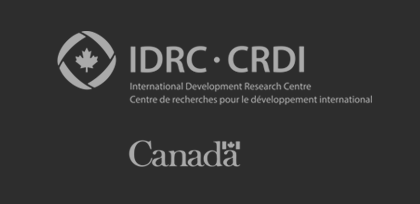OWSD NIGERIA NATIONAL CHAPTER PRESENTS ANTIMICROBIAL RESISTANCE – A COLLECTIVE RESPONSIBILITY
October 02, 2021
OWSD Nigeria National Chapter University of PortHarcourt Branch series of scientific communications: Kome Otokunefor on Antimicrobial Resistance – A Collective Responsibility
Antimicrobial Resistance – A Collective Responsibility
by
Kome Otokunefor PHD
Introduction
The World Health Organization (WHO) has declared the scourge of Antimicrobial Resistance (AMR) a global emergency of gigantic proportions (WHO, 2018). Antimicrobial resistance refers to the ability of a pathogen to withstand the effects of an antimicrobial agent, leading to reduced drug effectiveness. Historically, for every class of drugs developed, bacterial resistance was observed within 2 years of the introduction of these drugs into clinical practice (Peterson and Kaur, 2018). Over the years, drug-resistant pathogens have given rise to multidrug-resistant pathogens exhibiting resistance to three or more drug classes. The final evolution in drug resistance appears to be the pan-resistant bacteria that are resistant to drugs in every classification. This scenario is reminiscent of a return to the pre-antibiotic era, where mortality/death rates were up to 80% (Dhingra et al., 2020).
Currently, estimates reckon that antimicrobial resistance is responsible for up to 700,000 deaths worldwide, with one person dying from an antibiotic-resistant infection every 45 seconds (Wall, 2019). It is presently projected that by the year 2050 AMR will be responsible for a staggering 10 million deaths globally each year (O’Neill, 2014), with a global loss of $100 trillion and that Africa (along with India) will be one of the two worst places to be hit, with an estimated 4.1 million deaths per year. To put this in perspective, by 2050, antimicrobial resistance is expected to be the leading cause of death globally. Far exceeding cancer is slated to be the 2nd most common cause responsible for 8.2 million deaths.
Antimicrobial Resistance Development
The phenomenon of antimicrobial resistance is multidisciplinary arising from several possible driving factors which can generally be classed as misuse, abuse, and overuse. Traditionally, hospital environments have been the major driving factor for the development of antimicrobial resistance (Hernando-Amado et al., 2020) with up to 75% of drug-resistant bacteria found to be associated with healthcare-associated environments (Cassini et al., 2019). The development of this antimicrobial resistance has been found to be linked with an increase in the consumption of antimicrobial agents taking place worldwide. Other factors driving this development include the irrational use of antimicrobials in agriculture. This is a key contributor to the development of antimicrobial resistance. Agricultural antibiotics specifically comprise the bulk of antibiotics consumed in the United States. These antibiotics are used both as growth promoters found in sub-inhibitory concentrations in animal food, as prophylaxis, and in animal therapy (Dadgostar, 2019). as well as environmental pollution by antibiotics via agricultural practices, treatment facilities and pharmaceutical organizations (Junyan and Xiaoju, 2019). All of these either select for antimicrobial-resistant pathogens or create an enabling environment for the dissemination of antimicrobial-resistant genes to susceptible populations.
Consequences of antimicrobial resistance
The scourge of antimicrobial resistance is costly. This phenomenon has been associated with increased hospital stays, increased mortality and global costs, decreased productivity, and reduced quality of life (Founou et al., 2017). As far back as 2010, a study carried out in the United States, exploring variations in healthcare costs between methicillin-resistant (MRSA) and methicillin-susceptible (MSSA) strains of Staphylococcus aureus (Filice et al., 2010) reported a more than 100% increase in the cost of $35,000 used to treat MRSA infections as opposed to the $16,000 used to treat their susceptible MSSA counterparts. Consequently, higher mortality rates of 24% were also associated with MRSA unlike the 11.5% associated with MSSA. This is simply an illustration of how antimicrobial resistance impacts the individual and society at large. In addition to resistance associated with Escherichia coli, most problematic nosocomial cases of bacterial antimicrobial resistance are limited to a few bacterial families generally described as the ESKAPE pathogens. This acronym consists of Enterococcus faecium, Staphylococcus aureus, Klebsiella pneumoniae, Acinetobacter baumannii, Pseudomonas aeruginosa, and Enterobacter spp. These organisms specifically are associated with higher levels of mortality, hospital stay length, and cost (Mulani et al., 2019). Several strains of these bacteria are currently termed superbugs. This group of organisms is generally resistant to the last-line drugs available to combat them, making them essentially untreatable. Examples of superbug variants include Methicillin-resistant S. aureus, Carbapenem-resistant Acinetobacter baumannii, and Pseudomonas aeruginosa, Vancomycin-resistant Enterococci, Colistin-resistant Escherichia coli.
Antimicrobial Susceptibility – The African Story
An assessment of the current situation of antimicrobial susceptibility in the African continent with a focus on E. coli and the ESKAPE pathogens shows high levels of resistance. A 2017 review article on antimicrobial resistance in West Africa of which over 50% of articles were from Nigeria, reported pooled resistance rates of up to 81% observed in Escherichia coli against some antibiotics (Bernabe et al., 2017). To put this in perspective for out of 10 people with E. coli infections, those specific drugs would be ineffective in about 8 individuals. Similar high levels of resistance were observed for Klebsiella pneumoniae and Staphylococcus aureus against some antibiotics. On a positive note, however, for the newer third-generation cephalosporins, a higher level of activity was observed against the organisms (i.e. less resistance) with pooled resistance rates as low as 11.9% reported.
A 2018 nature review on MRSA (Lee et al., 2018) reports resistance rates ranging from 25 to 49% from Nigeria. Another 2018 study (Abubakar and Sulaiman, 2018) reported rising rates of MRSA in Nigeria between 2009 and 2013 (18.3% to 42.3%). Once again, to put this in perspective, nearly 5 out of 10 individuals with an S. aureus infection would probably encounter treatment failure. Data for vancomycin-resistant Enterococci in Nigeria noted resistance rates of up to 88.9%, though on average the pooled rate was 25.3% (Wada et al., 2020).
Combating Antimicrobial Resistance
With all these staggering statistics and the potential for even rising levels of resistance, control strategies to combat both the development and spread of antimicrobial resistance are essential. These strategies are often aimed to detect and prevent the development of resistance. As the multifactorial nature of antimicrobial resistance is now accepted, a One Health approach needs to be adopted to combat it. This approach simultaneously tackles the development and spread from three focal points: Humans, Animals, and Environment (Hernando-Amado et al., 2020). A
2016 review on Antimicrobial Resistance (O’Neill, 2016) commissioned by the then UK Prime Minister lists out nine interventions needed to combat antimicrobial resistance. The first of these is focused on sensitization involving educating the public on the growing menace of antimicrobial resistance. Other proposed intervention strategies involve the improvement in sanitary conditions to prevent/reduce the spread of infectious disease, reducing misuse, abuse, and overuse in both humans, animals, and agriculture. Additionally, surveillance and strategies promoting both the development of rapid diagnostics techniques, vaccines and novel antimicrobial agents are key interventions. No doubt, combating antimicrobial resistance is a multidisciplinary effort that needs every part of it functioning effectively to be successful.
The million-dollar question then is, where does each and every one of us come into the story? In which of these niches can you fit it? What role do you see yourself playing? Clearly, the responsibility for eradicating antimicrobial resistance does not rest only on Government officials, doctors, and healthcare workers. It is also not just limited to researchers, pharmacists, or even members of the legislative arm who creates the laws. Nor to educators committed to raising a growing generation of people who understand the critical role antibiotic stewardship plays, veterinary doctors, agricultural scientists, farmers, community health workers, and quality assurance officers who monitor effluents from various industries.
What then can we do?
- Every one of us can walk in an increased awareness of our personal responsibility. As much as it lies on us, avoid taking unprescribed antibiotics or antibiotics for cold. And commit to completing the prescribed dosage. Don’t stop the prescription simply because you feel better.
- Be an advocate, educating the public on antimicrobial resistance. Ask questions to get your neighbors and friends thinking on antimicrobial resistance and how to curb its spread. Disseminate the news for proper stewardship.
- Professionally, all hands must commit to curbing antimicrobial resistance
- Collectively, outreaches can be organized to spread the news to both peers and upcoming generations.
So, the question today is: “Will you commit to playing your own role?”
Conclusion
Our health, our responsibility, and each one of us owes it to generations to come to leave the world better than we met it. The scourge of antimicrobial resistance can and will be eradicated. The onus is ours to play our role. Each of us fighting in our little way, with the tools we have to end this growing trend of drug resistance.
References
Abubakar U., Sulaiman S.A.S. (2018). Prevalence, trend and antimicrobial susceptibility of Methicillin Resistant Staphylococcus aureus in Nigeria: A Systematic Review. J. Infect. Public. Health. 11(6): 763 – 770.
Bernabe K.J., Langendorf C., Ford, N., Ronat, J.B., Murphy, R.A. (2017). Antimicrobial resistance in West Africa: A Systematic Review and Meta-Analysis. International Journal of Antimicrobial Agents, 50(5): 629 – 639.
Cassini A., Högberg L.D., Plachouras D., Quattrocchi A., Hoxha A., Simonsen G.S., Colomb-Cotinat M., Kretzschmar M.E., Devleesschauwer B., Cecchini M., Ouakrim D.A. (2019). Attributable deaths and disability-adjusted life-years caused by infections with antibiotic-resistant bacteria in the EU and the European Economic Area in 2015: A Population-level modeling analysis. The Lancet Infectious Diseases. 19(1): 56 – 66.
Dadgostar P. (2019). Antimicrobial resistance: Implications and costs. Infection and drug resistance, 12: 3903.
Dhingra S., Rahman N.A.A., Peile E., Rahman M., Sartelli M., Hassali, M. A., ... & Haque, M. (2020). Microbial resistance movements: an overview of global public health threats posed by antimicrobial resistance, and how best to counter. Frontiers in Public Health, 8, 531.
Filice G.A., Nyman J.A., Lexau C., Lees C.H., Bockstedt L.A., Como-Sabetti K., Lesher L.J., Lynfield R. (2010). Excess costs and utilization associated with methicillin resistance for patients with Staphylococcus aureus infection. Infection Control & Hospital Epidemiology. 31(4): 365 – 373.
Founou R.C., Founou L.L., Essack S.Y. (2017). Clinical and economic impact of antibiotic resistance in developing countries: A systematic review and meta-analysis. PloS One, 12(12), e0189621. https://doi.org/10.1371/journal.pone.0189621
Hernando-Amado S., Coque T.M., Baquero F., Martínez, J.L. (2020). Antibiotic resistance: moving from individual health norms to social norms in one health and global health. Frontiers in Microbiology. 11, 1914.
Lee A., de Lencastre H., Garau J. et al. Methicillin-resistant Staphylococcus aureus. Nat Rev Dis Primers 4, 18033 (2018). https://doi.org/10.1038/nrdp.2018.33
Mulani M.S., Kamble E.E., Kumkar S.N., Tawre M.S., Pardesi K.R. (2019). Emerging strategies to combat ESKAPE pathogens in the era of antimicrobial resistance: A Review. Frontiers in Microbiology. 10, 539.
O'Neill J. (2016). Tackling drug-resistant infections globally: final report and recommendations. Available online at:
https://amr-review.org/sites/default/files/160518_Final%20paper_with%20cover.pdf (Last assessed 27th September 2021).
Peterson E., Kaur P. (2018). Antibiotic resistance mechanisms in bacteria: relationships between resistance determinants of antibiotic producers, environmental bacteria, and clinical pathogens. Frontiers in Microbiology. 9, 2928.
Wada Y., Harun A.B., Yean C.Y., Zaidah A.R. (2020). Vancomycin-Resistant Enterococci (VRE) in Nigeria: The First Systematic Review and Meta-Analysis. Antibiotics (Basel, Switzerland). 9(9), 565.
Wall S. (2019). Prevention of antibiotic resistance–an epidemiological scoping review to identify research categories and knowledge gaps. Global Health Action. 12(sup1), 1756191.
World Health Organization. Antimicrobial Resistance. Geneva: Key Facts. (2018). Available online at: https://www.who.int/news-room/fact-sheets/detail/antimicrobial-resistance (Last assessed 27th September 2021).
BSc. Uniport, MSc Manchester, PhD. Nottingham
Senior Lecturer
Department of Microbiology
University of Port Harcourt
https://ng.linkedin.com/in/kome-otokunefor-b7801a64











































